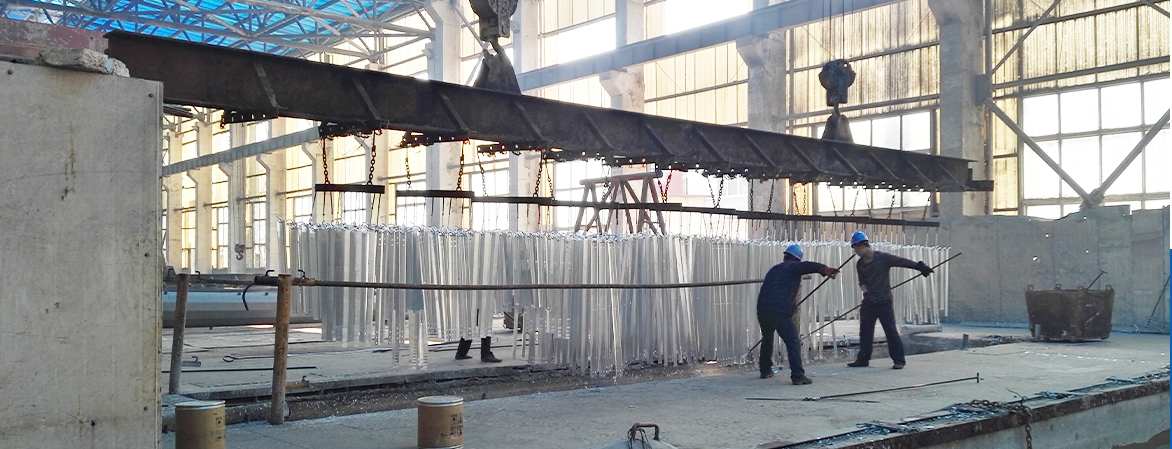During power transmission, the iron tower is a very important component. During the production of iron tower steel products, the production process of hot-dip galvanizing is generally adopted on the surface to protect the surface of steel products from the corrosion of external air and various environments. The use of hot-dip galvanizing process can achieve good anti-corrosion effect. With the higher requirements of power transmission, the requirements for the production process of galvanized steel products are also higher.

(1) Basic principle of hot dip galvanizing
Hot dip galvanizing, also known as hot dip galvanizing, is one of the most excellent coating methods for protecting steel substrate. In the liquid zinc, after the steel workpiece has undergone physical and chemical treatment, the steel workpiece is immersed in molten zinc with a temperature of 440 ℃ ~ 465 ℃ or higher for treatment. The steel substrate reacts with the molten zinc to form a Zn Fe gold layer and a pure zinc layer and covers the entire surface of the steel workpiece. The galvanized surface has certain toughness, can withstand great friction and impact, and has a good combination with the matrix.
This plating method not only has the corrosion resistance of galvanizing, but also has Zn Fe alloy layer. It also has strong corrosion resistance that can not be compared with galvanizing. Therefore, this plating method is especially suitable for various strong corrosive environments such as strong acid, alkali and fog.
(2) Performance characteristics of hot dip galvanizing
It has a thick and dense pure zinc layer on the steel surface, which can avoid the contact of the steel substrate with any corrosion solution and protect the steel substrate from corrosion. In the general atmosphere, a thin and dense zinc oxide layer is formed on the surface of the zinc layer, which is difficult to dissolve in water, so it plays a certain role in protecting the steel matrix. If zinc oxide and other components in the atmosphere form insoluble zinc salts, the anti-corrosion effect is more ideal.
After hot-dip galvanizing, the steel has a Zn Fe alloy layer, which is compact and has unique corrosion resistance in marine salt fog atmosphere and industrial atmosphere. Due to the strong bonding, Zn Fe is miscible and has strong wear resistance. Because zinc has good ductility and its alloy layer is firmly attached to the steel substrate, the hot-dip galvanized workpiece can be formed by cold punching, rolling, wire drawing, bending, etc. without damaging the zinc coating.
After hot galvanizing, the steel workpiece is equivalent to an annealing treatment, which can effectively improve the mechanical properties of the steel substrate, eliminate the stress of the steel workpiece during forming and welding, and is conducive to turning the steel workpiece.
The surface of steel workpiece after hot galvanizing is bright and beautiful. Pure zinc layer is the most plastic zinc layer in hot-dip galvanizing. Its properties are basically similar to pure zinc, and it has ductility, so it is flexible.
Post time: Aug-26-2022





